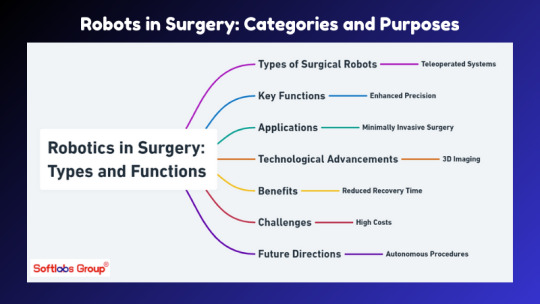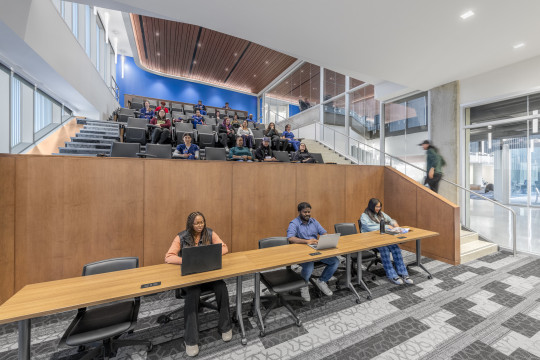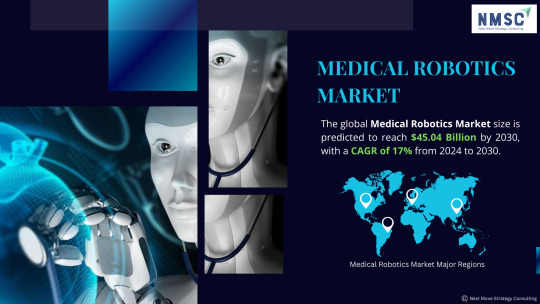#medicalrobots
Explore tagged Tumblr posts
Text
Medical Telepresence Robots: Understanding Market Size, Share, and Growth Trajectories
The global medical telepresence robots market size is expected to reach USD 224.9 million by 2030, registering a CAGR of 18.7% from 2024 to 2030, according to a new report by Grand View Research, Inc. In the healthcare sector, telepresence robots assist in several tasks, such as remote visiting, patient monitoring, delivering food and medicines, connecting to physicians and nurses for medical assistance, and reminding patients to take medicines on time. For example, Amy Robotics offers AMY A1, a Customizable Telepresence Robot used in a hospital environment.
Furthermore, the growth of the market is attributed to the introduction of technologically advanced products, the rise in the adoption of telepresence robots, and growing investment in the healthcare sector. For instance, in January 2022, Intuitive India introduced Intuitive Telepresence (ITP), a remote observation technology for surgical cases. The ITP uses its proprietary technology that permits real-time exchange of audio and video between the operating surgeon and remote observer. This HIPPA-compliant technology offers a safe and secure platform for distance learning on the da Vinci Robotic platform.
Medical Telepresence Robots Market Report Highlights
Based on type, the mobile segment dominated the medical telepresence robots market in 2023 and is anticipated to register the fastest CAGR growth over the forecast period. The segment's growth is attributed to technological advancement and the introduction of new devices
Based on component, camera segment held the largest market share in 2023. The growing advancement in technology, sensors and control systems are boosting market growth
Based on end use, hospitals & assisted living facilities segment held the largest market share in 2023. The growth is attributed to a rise in health care expenditure and advancement in healthcare infrastructure
North America dominated the global market. The growth of this region is attributed to rapid adoption of AI and robotics in the healthcare sector and presence of key players in the market.
For More Details or Sample Copy please visit link @: Medical Telepresence Robots Market Report
Moreover, government initiatives and investment in research & development in AI and robotics drive innovation and attract new market players. The increase in the number of market players offering modern and innovative solutions and a greater emphasis on R&D in response to changing requirements has resulted in the introduction of innovative solutions, further impacting market growth. For instance, in January 2023, the European Commission (EC) and national funding agencies invested USD 64.28 million to test and validate innovative AI and robotics solutions for the healthcare industry and accelerate their pathway to market. This project is known as a Testing and Experimentation Facility for Health AI and Robotics (TEF-Health).
Telepresence robots in healthcare facilitate virtual communication among patients, doctors, medical students, and therapists worldwide. They enable doctors and patients to communicate through HD video and audio. Patients can consult with doctors and discuss their health concerns in real-time. Telepresence robots enable the delivery of medical education using audiovisual recording and live streaming, which includes training for surgery, clinical pathology, and other academic communications. For instance, the University Hospital Center of Clermont Ferrand & Acte Auvergne Association is equipped with telepresence robots.
List of major companies in the Medical Telepresence Robots Market
Ava Robotics Inc.
Amy Robotics
Guangzhou Yingbo Intelligent Technology Co., Ltd.
Axyn Robotics
Blue Ocean Robotics
Teladoc Health, Inc. (InTouch Health)
OhmniLabs, Inc.
VGo Communications, Inc.
Rbot
Xandex Inc.
For Customized reports or Special Pricing please visit @: Medical Telepresence Robots Market Analysis Report
We have segmented the global medical telepresence robots market based on type, component, end-use, and region.
#TelepresenceRobots#MedicalRobots#HealthcareRobotics#Telemedicine#MedicalTelepresence#RoboticsInHealthcare#DigitalHealth#RemoteHealthcare#Telehealth#MedicalTechnology#HealthTech#RoboticsMarket#TelemedicineRobots#RobotAssistedCare
0 notes
Text
Revolutionizing Healthcare: The Promise Of Medical Robots

In the ever-evolving landscape of healthcare, technology continues to play a pivotal role in transforming patient care, diagnosis, and treatment. Among the most promising advancements is the integration of medical robots into clinical practice. From assisting surgeons in the operating room to automating repetitive tasks in laboratories, medical robots are revolutionizing healthcare delivery in ways once thought unimaginable. In this article, we delve into the world of medical robots, exploring their applications, benefits, challenges, and the future of robotic-assisted medicine.
The Evolution of Medical Robots
Robots have come a long way since their inception in the 1980s. Initially used for tasks such as patient transport and medication delivery, their capabilities have expanded dramatically over the years. Today, healthcare robots encompass a diverse range of technologies, including surgical robots, rehabilitation robots, telepresence robots, and robotic exoskeletons, each designed to address specific healthcare needs.
Applications of Healthcare Robots
Surgical Robotics: Perhaps the most well-known application of medical robots is in surgery. Surgical robots, such as the da Vinci Surgical System, enable surgeons to perform minimally invasive procedures with enhanced precision and dexterity. These systems use advanced imaging, robotics, and computer-assisted technologies to guide surgical instruments with unparalleled accuracy, resulting in shorter recovery times and improved patient outcomes.

Telepresence Robots: In the era of telemedicine, telepresence robots are bridging the gap between patients and healthcare providers. These robots, equipped with cameras, screens, and audio systems, allow physicians to remotely interact with patients, conduct virtual consultations, and oversee medical procedures from anywhere in the world. Telepresence robots are particularly valuable in rural or underserved areas where access to specialized healthcare services is limited.
Laboratory Automation: Merobots are also revolutionizing laboratory workflows by automating repetitive tasks such as sample handling, testing, and analysis. Automated laboratory systems, powered by robotics and artificial intelligence, streamline processes, reduce errors, and improve efficiency, enabling healthcare professionals to focus on complex diagnostic and therapeutic tasks.
Benefits of Medical Robots
Precision and Accuracy: One of the key advantages of healthcare robots is their ability to perform tasks with unmatched precision and accuracy. In surgery, for example, robotic assistance allows surgeons to execute complex maneuvers with submillimeter accuracy, minimizing tissue damage and reducing the risk of complications.
Minimally Invasive Procedures: Surgical robots enable minimally invasive procedures, which involve smaller incisions, less blood loss, and faster recovery times compared to traditional open surgery. This not only benefits patients by reducing pain and scarring but also lowers the risk of postoperative infections and complications.
Enhanced Efficiency and Productivity: Automation of repetitive tasks in healthcare settings improves efficiency and productivity, allowing healthcare professionals to focus their time and expertise on more complex and critical aspects of patient care. By freeing up valuable resources, healthcare robots help optimize workflow and reduce waiting times for patients.
Remote Access and Collaboration: Telepresence robots facilitate remote access to healthcare services, enabling consultations, diagnosis, and treatment planning regardless of geographical barriers. This is especially valuable in emergencies, disaster response situations, or during pandemics when physical distancing is necessary.
Challenges and Considerations
Despite the numerous benefits they offer, healthcare robots also pose certain challenges and considerations:
Cost: The initial investment required to implement medical robotic systems can be substantial, limiting their adoption, especially in resource-constrained healthcare settings. Additionally, ongoing maintenance and upgrades contribute to the total cost of ownership, which may be prohibitive for some institutions.

Regulatory and Ethical Considerations: As with any medical technology, regulatory approval and ethical considerations are paramount. Ensuring the safety, efficacy, and ethical use of healthcare robots requires stringent regulatory oversight, standardized protocols, and adherence to ethical principles such as patient autonomy and informed consent.
Integration into Healthcare Systems: Integrating healthcare robots into existing healthcare systems and workflows can be complex and challenging. Compatibility with electronic health record systems, interoperability with other medical devices, and alignment with clinical protocols are critical factors to consider during implementation.
The Future of Medical Robots
Despite these challenges, the future of healthcare robots looks promising. Continued advancements in robotics, artificial intelligence, and sensor technologies are driving innovation and expanding the capabilities of healthcare robots. As costs decline and usability improves, healthcare robots are expected to become more accessible and widespread, transforming healthcare delivery on a global scale.
Expanding Applications and Innovations
Pharmaceutical Manufacturing: In the realm of pharmaceuticals, medical robots are revolutionizing drug discovery, development, and production. Automated systems equipped with robotic arms and precision dispensers enable high-throughput screening of potential drug candidates, accelerating the pace of research and development. Additionally, robotic platforms facilitate precise formulation and compounding of medications, ensuring consistency and quality in pharmaceutical manufacturing processes.
Assistive Robotics for Elderly Care: With an aging population worldwide, there is a growing need for assistive technologies to support independent living and improve the quality of life for older adults. Assistive robots, equipped with sensors, cameras, and AI algorithms, can assist with activities of daily living such as bathing, dressing, and medication reminders. These robots not only provide physical assistance but also offer companionship and social engagement, reducing feelings of loneliness and isolation among elderly individuals.
Addressing Accessibility and Equity

Global Access to Healthcare: Healthcare robots have the potential to bridge the gap in access to healthcare services, particularly in underserved or remote areas. Telepresence robots enable virtual consultations and medical interventions, allowing patients to receive timely care without the need for travel. By democratizing access to specialized medical expertise, healthcare robots have the power to improve health outcomes and reduce disparities in healthcare access.
Affordability and Affordability: While the initial cost of healthcare robots may be a barrier to adoption, ongoing advancements in technology and manufacturing are driving down costs and making them more affordable. Additionally, innovative financing models and public-private partnerships can help ensure equitable access to medical robots, particularly in low-resource settings where they are most needed. By prioritizing affordability and accessibility, stakeholders can maximize the impact of healthcare robots on global health outcomes.
Conclusion:
In conclusion, medical robots represent a groundbreaking paradigm shift in healthcare, offering precision, efficiency, and accessibility like never before. From the operating room to the laboratory and beyond, healthcare robots are empowering healthcare professionals, enhancing patient outcomes, and shaping the future of medicine. With ongoing innovation, collaboration, and ethical stewardship, medical robots are poised to revolutionize healthcare delivery and improve the lives of millions around the world.
#MedicalRobots#HealthcareInnovation#RoboticsInMedicine#FutureOfHealthcare#HealthTech#AccessibleMedicine
0 notes
Text

Dive into the world of Robotics in Surgery: Types and Functions! Discover how robotic technology is transforming surgical procedures, from minimally invasive techniques to precise movements. Explore different types of surgical robots and their diverse functions, enhancing surgeon capabilities and patient outcomes. Join us on the forefront of medical innovation as we explore the future of surgery.
0 notes
Text










The University of Texas at Arlington has a new School of Social Work & Smart Hospital for the College of Nursing and Health Innovation designed by SmithGroup and built by Turner Construction.
The 150,000-square-foot building features a virtual reality lab, a classroom set up like an apartment where students can practice hospice care and at-home nursing, and a counseling center. The Smart Hospital, which includes hospital rooms with robotic mannequins that simulate medical emergencies, includes a simulation theater. These features place students in critical simulation-based learning activities which will prepare them for the workforce.
© Wade Griffith Photography 2024
#UTASchoolofSocialWork#SchoolofSocialWork#CONHI#smarthospital#Arlington#nursingprogram#contemporaryhealthcare#healthcare#medicalstudent#virtualreality#vrhealthcare#simulationcenter#researchlabs#medicalrobots#learningspaces#healthscience
1 note
·
View note
Link
Discover the future of healthcare with robotic surgery.!
Learn how cutting-edge technology is revolutionizing precision, recovery, and patient outcomes.
Get more details, at: https://bit.ly/3YlbwuN
#roboticsurgery#medicalrobotics#futureofsurgery#surgicalinnovation#minimallyinvasive#medicaltechnology#roboticassistedsurgery#aiinhealthcare#healthtech
0 notes
Text
youtube
#disinfectionrobot#uvdisinfectionrobot#medicaldevice infectionprevention uvcrobot medicalequipment uvcdisinfection uvcdisinfectionrobot disinfectionservice medicalrobotics servic#Youtube
0 notes
Text

𝑻𝒓𝒂𝒏𝒔𝒇𝒐𝒓𝒎𝒊𝒏𝒈 𝑯𝒆𝒂𝒍𝒕𝒉𝒄𝒂𝒓𝒆: 𝑬𝒙𝒑𝒍𝒐𝒓𝒊𝒏𝒈 𝒕𝒉𝒆 𝑫𝒚𝒏𝒂𝒎𝒊𝒄𝒔 𝒐𝒇 𝒕𝒉𝒆 𝑴𝒆𝒅𝒊𝒄𝒂𝒍 𝑹𝒐𝒃𝒐𝒕𝒊𝒄𝒔 𝑴𝒂𝒓𝒌𝒆𝒕
As we stride into the future of healthcare, the convergence of technology and medicine is transforming patient care like never before. One such frontier is the burgeoning field of Medical Robotics, revolutionizing procedures, enhancing precision, and improving patient outcomes.
The global Medical Robotics Market size is predicted to reach $45.04 Billion by 2030, with a CAGR of 17% from 2024 to 2030.
𝑫𝒐𝒘𝒏𝒍𝒐𝒂𝒅 𝒂 𝑭𝑹𝑬𝑬 𝑺𝒂𝒎𝒑𝒍𝒆: https://www.nextmsc.com/medical-robotics-market/request-sample?utm_source=sanyukta-13-may-2024&utm_medium=sanyukta-tumblr&utm_campaign=sanyukta-medical-robotics-market
Let's delve into some key insights shaping the landscape:
𝑴𝒂𝒓𝒌𝒆𝒕 𝑮𝒓𝒐𝒘𝒕𝒉: The Medical Robotics Market continues to soar, driven by factors such as the rising prevalence of chronic diseases, increasing demand for minimally invasive surgeries, and advancements in robotics and AI technologies. Market projections indicate robust growth, with estimates surpassing [insert figure] by [insert year].
𝑪𝒍𝒊𝒏𝒊𝒄𝒂𝒍 𝑨𝒑𝒑𝒍𝒊𝒄𝒂𝒕𝒊𝒐𝒏𝒔: From surgical robots assisting in complex procedures like cardiac surgery and neurosurgery to rehabilitation robots aiding in physical therapy, the spectrum of clinical applications is vast and expanding. These technologies are not just augmenting human capabilities but also enabling procedures previously deemed impossible.
𝑮𝒍𝒐𝒃𝒂𝒍 𝑨𝒅𝒐𝒑𝒕𝒊𝒐𝒏:The adoption of medical robotics is witnessing a global surge, with North America leading the charge, followed closely by Europe and the Asia-Pacific region. This widespread adoption underscores the universal recognition of the transformative potential of these technologies in healthcare delivery.
𝑭𝒖𝒕𝒖𝒓𝒆 𝑶𝒖𝒕𝒍𝒐𝒐𝒌: As we look ahead, the trajectory of the Medical Robotics Market is poised for exponential growth. With ongoing advancements in AI, machine learning, and sensor technologies, coupled with increasing investments in R&D, the future holds immense promise for further enhancing the efficacy and accessibility of medical robotics solutions.
𝑲𝒆𝒚 𝑷𝒍𝒂𝒚𝒆𝒓𝒔: Several market players operating in the Medical Robotics market include Medtronic Plc, Smith and Nephew, Omnicell Inc., Accuray incorporated, iRobot Corporation, ARxIUM, Renishaw Plc, CMR Surgical, BD Rowa, Siemens Healthineers AG, Zimmer Biomet holdings, Inc., Intuitive Surgical, Stryker Corporation, Johnson & Johnson and Teladoc Health and others are provided in the Medical Robotics market report.
Join me in embracing the transformative potential of Medical Robotics as we pave the way towards a future where precision meets compassion in healthcare.
#medicalrobotics#healthcareinnovation#futureofmedicine#healthcare#AI#technology#lifesciences#marketresearch#markettrends#businessinsights#marketanalysis
0 notes
Text

ROBOTIC SPINE SURGERY @ ASSICON 2024 18-20th Jan 2024 , Westin Powai , Mumbai
Do u wanna learn about robotic spine surgery :-
How does the machine works - Basics of Equipment / Technology
Pre op Planning for robotic Spine Surgery
Intra op manouvering of Robots for Surgery
Real time Surgical Case planning / Execution Simulation
Experiences of Masters
To attend join us :- 18th Jan 2024 Globus Excelsius Robot 12.15 pm - 1.15 pm
19th Jan 2024 Medtronic MAZORX Robot 12.30-1.30 pm
Register now if u haven’t https://assicon2024.vama.events/Index/RegEmail
#RoboticSpineSurgery#ASSICON2024#WestinPowai#Mumbai#GlobusExcelsiusRobot#MedtronicMAZORXRobot#SurgicalInnovation#SpineSurgeryTech#HealthcareConference#MedicalRobotics
0 notes
Text
Robotics in Healthcare : Rise During Covid 19, Benefit, Concern & AI in Medical Robotics
Hello Bloggers, Welcome to all of you in Lifelong Health. In this article, we learn about Robotics in Healthcare. Throughout the world, operating rooms are gradually incorporating medical robots, which are revolutionizing the way surgeries are carried out. These cutting-edge devices can help surgeons carry out difficult and delicate procedures, helping to enhance results and lower the possibility of complications, expediting supply delivery and disinfection, and freeing up healthcare professionals to concentrate on interacting with and tending to patients. With more hospitals and clinics investing in these state-of-the-art technologies, the use of medical robots in surgery has increased recently. In this article we discuss about Robotics in Healthcare : Rise During Covid 19, Benefit, Concern & AI in Medical Robotics. Read More
1 note
·
View note
Text
Robotics Surgery - Achievement, gaps and future direction
First robotic liver transplant in U.S. performed by Washington University surgeons Yes, Its a milestone moment in #MedicalRobotics Liver transplant procedure is considered complex and sensitive invasive process due to fear of excessive bleeding in removing diseased liver and requires specialized skill attaching new liver for delicately sewing several tiny blood vessels together. Its a…

View On WordPress
#artificialintelligence#emergingtechnology#Healthcare#Hospitals#livertransplant#machinelearning#medicaldevices#medicalrobotics#Robotics#surgery#surgicalrobotics
0 notes
Photo

Revolutionising surgery with the perfect blend of precision and innovation! Discover the future of surgery with Apollo Hospital's state-of-the-art robotics technology, delivering unparalleled accuracy, faster recovery time. Join us on our mission to transform healthcare.
For appointments,📞 WhatsApp: +254-719-581035 / +254-789-150890🌎 www.apolloinformationcentre.com
#FutureOfSurgery #RoboticSurgery #ApolloHospital #StateOfTheArt #MedicalInnovation #SurgicalTechnology #HealthcareAdvancements #PrecisionSurgery #RoboticsInHealthcare #MinimallyInvasiveSurgery #MedicalRobots #SurgicalRobots #InnovativeMedicine #MedicalBreakthroughs #CuttingEdgeTechnology
0 notes
Photo

Robots are people too... . . #covid #illo #gouacheillustration #robots #pandemic #medicalrobots #stayathomedrawrobots https://www.instagram.com/p/B-feijhioAB/?igshid=13cgwb8bfgrdm
0 notes
Photo

Global Medical Robots Market Is Anticipated To Grow At a Double Digit CAGR From 2019 To 2030
The most recent market knowledge contemplate on Medical Robots Market depends on measurements got from the use of both essential and auxiliary research to show experiences relating to the operational model, openings and focused scene of Medical Robots Market for the gauge time frame, 2019 - 2030.
Get detailed report @ https://www.marketindustryreports.com/63/medical-robots-market
Get free PDF sample @ https://www.marketindustryreports.com/pdf/63
Purchase report @ https://www.marketindustryreports.com/checkout/63
#medicalrobotsmarket#medicalrobots#medical#robots#robotics#healthcare#health#analysis#forecast#globalanalysis#research#worldwide
0 notes
Photo

Ran into Moxy the robotic nurses aide this morning , she didn’t have time to chat she said she was recharging for a very busy morning here at @shannon_health #hospital #robot #medicalrobotics #healthcare #sanangelotx (at Shannon Medical Center) https://www.instagram.com/p/CYzCuU6L4H3/?utm_medium=tumblr
0 notes
Video
youtube
𝐄𝐱𝐩𝐥𝐨𝐫𝐢𝐧𝐠 𝐭𝐡𝐞 𝐅𝐮𝐭𝐮𝐫𝐞 𝐨𝐟 𝐌𝐞𝐝𝐢𝐜𝐚𝐥 𝐑𝐨𝐛𝐨𝐭𝐢𝐜𝐬: 𝐌𝐚𝐫𝐤𝐞𝐭 𝐈𝐧𝐬𝐢𝐠𝐡𝐭𝐬 𝐚𝐧𝐝 𝐓𝐫𝐞𝐧𝐝𝐬
Welcome to our channel, where we delve into the cutting-edge world of medical robotics. In this video, we present comprehensive market research insights into the dynamic landscape of medical robotics technology.
The field of medical robotics is rapidly evolving, revolutionizing healthcare delivery and patient outcomes. Our in-depth analysis covers various aspects, including market size, growth trends, key players, technological advancements, and future projections.
Join us as we explore the latest market trends and delve into the factors driving the growth of medical robotics. From surgical robots to rehabilitation assistance devices, we uncover the diverse applications and potential market opportunities within this burgeoning sector.
Whether you're a healthcare professional, investor, or technology enthusiast, this video provides valuable insights into the transformative impact of medical robotics on the healthcare industry.
Don't miss out on the opportunity to stay informed and ahead of the curve. Subscribe to our channel and stay tuned for more updates on the fascinating world of medical robotics. Let's embark on this journey together towards a healthier and more innovative future.
#youtube#medicalrobotics#healthcareinnovation#technologytrends#futureofhealthcare#marketresearch businessinsights
0 notes
Text
Health Care Robotic Assisted Systems – Da Vinci Robot, Most Capable Medical Care System
Health Care Robotic Assisted Systems – Da Vinci Robot, Most Capable Medical Care System
https://sxhsite.com/wp-content/uploads/2021/01/phx_video_1611592760503.mp4 Intuitive | Robotic Assisted Systems | da Vinci Robot Da Vinci Xi: Our most capable system Get your hands on our most advanced instrumentation, vision and features such as integrated table motion. The da Vinci Xi is versatile and flexible, with setup automation and guidance that promotes OR efficiency. It provides…

View On WordPress
#HealthCare Robotic medicalrobotics Assisted Systems DaVincirobots mostcapable medicalcare#Health Care. Robotic. medical robotics. Assisted. Systems. Da Vinci robots. mostcapable. medicalcare#sx8286wads-25012021-2#WhyCovid19. deadly. peopleobesity. youngpeople. lifeprotect. like. love. share
0 notes